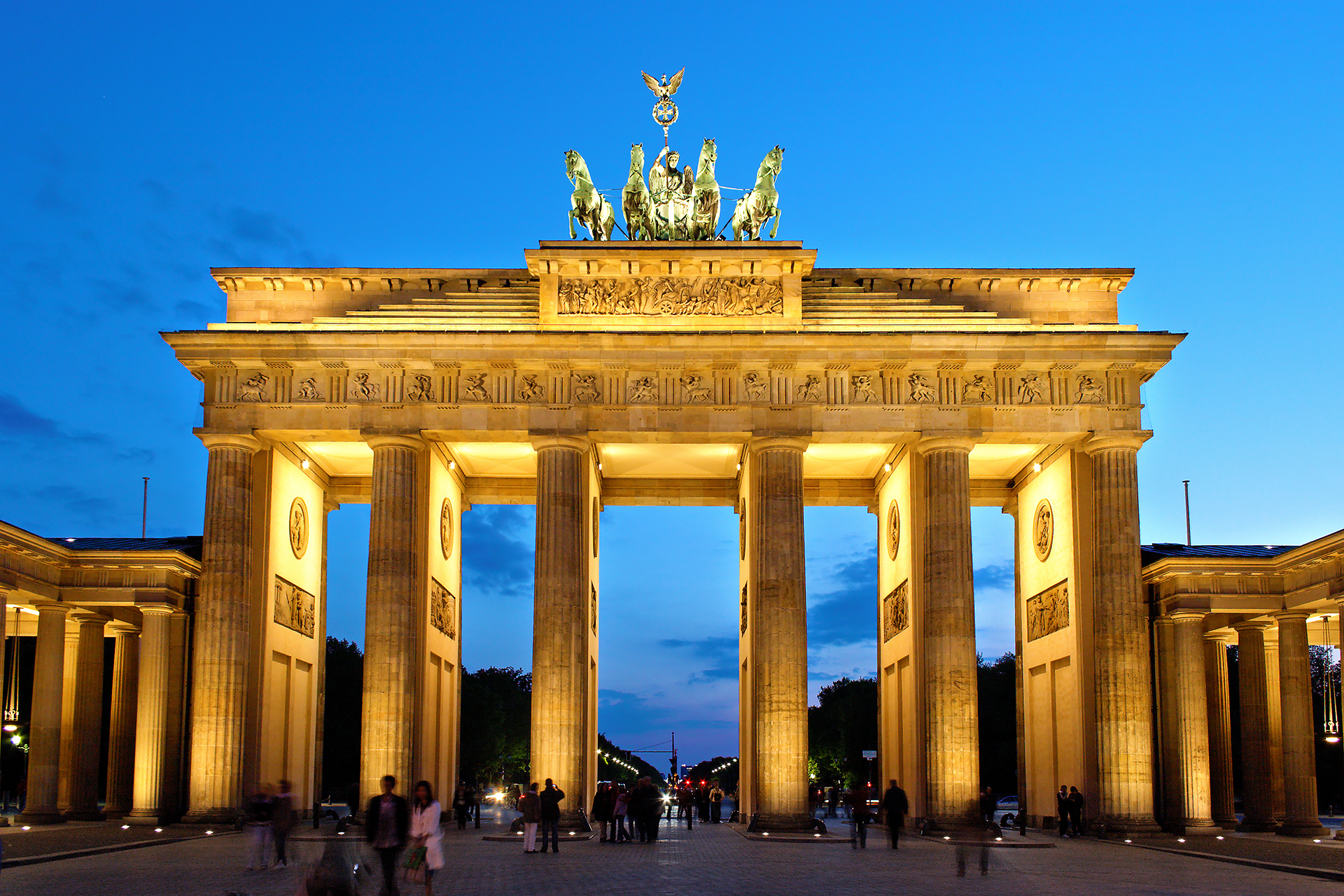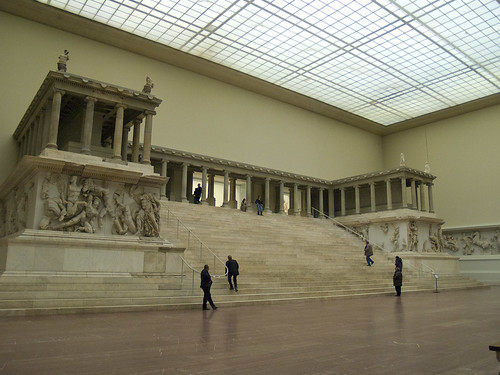BERLIN
BRANDENBURG GATE
 The Brandenburg Gate is an iconic landmark of Berlin and Germany. It also appears on German euro coins (10 cent, 20 cent, and 50 cent). The Reichstag building is the traditional seat of the German Parliament, renovated in the 1950s after severe World War II damage. The building was again remodeled by British architect Norman Foster in the 1990s and features a glass dome over the session area, which allows free public access to the parliamentary proceedings and magnificent views of the city.
The Brandenburg Gate is an iconic landmark of Berlin and Germany. It also appears on German euro coins (10 cent, 20 cent, and 50 cent). The Reichstag building is the traditional seat of the German Parliament, renovated in the 1950s after severe World War II damage. The building was again remodeled by British architect Norman Foster in the 1990s and features a glass dome over the session area, which allows free public access to the parliamentary proceedings and magnificent views of the city.THE PERGAMON MUSEUM
The Pergamon Museum is one of the largest and most impressive museums in Berlin, and if you only get to see one museum, this should be it. Itwas named after an ancient Greek city and was eventually opened in 1930 after a long period of construction. Building had started in 1907 but was severely interrupted due to World War I and the subsequent years of economic hardship in Germany. Like so many other notable Berlin museums, it is located on Museum Island and is listed as a UNESCO world heritage site.
The Pergamon is divided into several areas including Near East Museum, the Islamic Art Museum, Folk Museum and the Antiquity Collection. There is also an Ancient Coin Museum. Its main focus is on ancient and early modern history.
 One of many striking artifacts in the Antiquity Collection is the massive structure of the Altar of Zeus. It originally came from the Acropolis of Pergamon (Turkey) where some of the base still remains. Nearly the entire 2000 year structure was uprooted and taken by the Germans to the museum. It takes up the space of a whole room and its transportation is an engineering feat. The marble staircase is spectacular. Some suggest it is one of the largest single structures to be housed in a museum.
One of many striking artifacts in the Antiquity Collection is the massive structure of the Altar of Zeus. It originally came from the Acropolis of Pergamon (Turkey) where some of the base still remains. Nearly the entire 2000 year structure was uprooted and taken by the Germans to the museum. It takes up the space of a whole room and its transportation is an engineering feat. The marble staircase is spectacular. Some suggest it is one of the largest single structures to be housed in a museum. Other large pieces include a panel from the Palace Throne Room from Babylon (Iraq), the Babylonian Procession Street, the Lions Parade panel, the Market Gate of Miletus, the Islamic Mshatta facade and the massive, mosaic Ishtar Gate with its ornately placed unicorns.
There are so many noteworthy masterpieces on display that is would take several days to thoroughly investigate all exhibits. For those with a keen interest in antiquity, a visit to this museum is a must.
THE TOPOGRAPHY OF TERROR
The Topography of Terror chronicles the horrors and atrocities of the Nazis from the period 1933 to their fall in 1945. It is situated near the boundary between West Berlin and the former communist East Berlin and is adjacent to part of the Berlin Wall which was erected during the Cold War.
It is an open air museum, built on and near the former buildings used by the Third Reich Government during their time in power. Many of these buildings, such as the Gestapo and SS Headquarters, were completely destroyed during the war and the subsequent allied invasion.
In the late 1980s, these ruins were excavated and revealed cellars which were used by the Nazis to torture, imprison and kill political prisoners. In 1987, the site was made into a memorial and museum dedicated to revealing the horrors of the German Third Reich.
KAISER-WILHELM MEMORIAL CHURCH
 The most striking building on Kurfürstendamm, Berlin's most exclusive shopping street, in the half destroyed Kaiser-Wilhelm Memorial Church (Gedächtnis-Kirche). Initially, there were plans to demolish the church to make place for a new one, but due to public pressure this did not happen. Instead, the church stands were it always has, with its bombed out tower - a constant reminder of the Second World War. Today, the church is a memorial hall, where visitors can still see the ground floor interior of the church as well as see before and after shots, and learn more about the history of the church and the surrounding area. Even though the old church was never demolished, a new one was built. Standing in stark contrast just beside the original is the new church, designed and built in the 1960s.
The most striking building on Kurfürstendamm, Berlin's most exclusive shopping street, in the half destroyed Kaiser-Wilhelm Memorial Church (Gedächtnis-Kirche). Initially, there were plans to demolish the church to make place for a new one, but due to public pressure this did not happen. Instead, the church stands were it always has, with its bombed out tower - a constant reminder of the Second World War. Today, the church is a memorial hall, where visitors can still see the ground floor interior of the church as well as see before and after shots, and learn more about the history of the church and the surrounding area. Even though the old church was never demolished, a new one was built. Standing in stark contrast just beside the original is the new church, designed and built in the 1960s.
